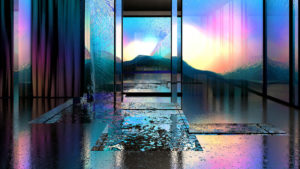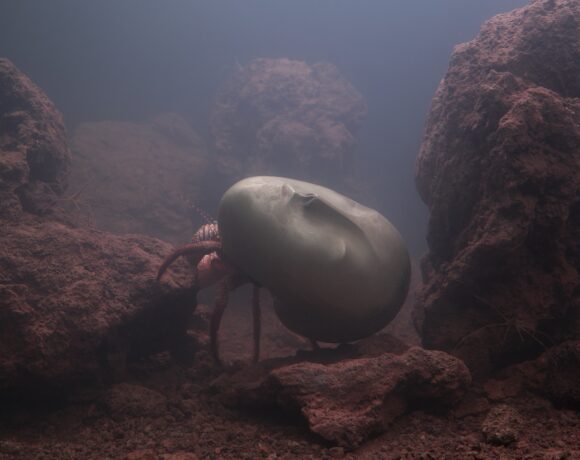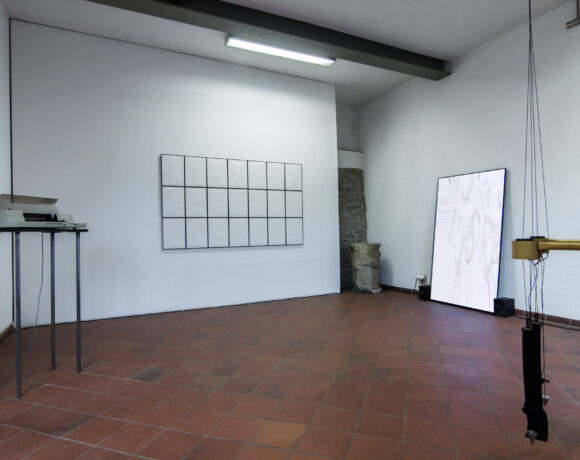“Is mankind destined to disappear?” this is the rather disturbing question that has been proposed as the basis for reflection for the 2019/2020 edition of the Nemo numerical arts biennial. For five months (October 2019 – February 2020) more than 80 events, organized in collaboration with 45 cultural sites scattered throughout France, including the Human Learning exhibition at the Canadian Cultural Center in Paris extended until mid-April, attempted to answer this question.
Through the collective exhibition of the works of various French and Canadian artists, the theme of machine learning is addressed, linked to the study of artificial intelligence. In essence, it is based on a mathematical and statistical system to allow computers to “learn”, that is, to be able to solve ever new tasks for which they have not been programmed. Exactly, we are talking about autonomous machines, and without wanting to go too far, “thinking”. Machine learning promotes the development of machine skills by giving robots the ability to move, to perceive the environment around them and to recognize faces, body languages, handwritten characters, etc. The aim is to support human activity in various areas such as medical diagnosis, investigation and detection of insurance fraud, financial analysis or legal and judicial analysis. Since the mathematician Alan Turing began researching the subject in the 1950s, there have been numerous evolutions that have led to an almost total dependence of the human being on technology.
In the artistic sphere, one of the pioneers in this sense is the painter and sculptor Nicolas Schöffer, producer of kinetic art, that is, the one that proposes works containing moving parts, but above all of cybernetic art, today called interactive art.
Once traced the path many other artists have ventured into this innovative approach “collaborating” with robots to create their works. However, the idea gradually began to arise that these machines could become … we do not mean artists, but autonomous and perhaps more performing “art producers” than the human being. Robotics experts and authors of science fiction novels approach the theme, underlining the possibility that the weak and irresponsible human being could, one day not very far away, be dominated and in the long term entirely replaced by machines. Fortunately in general these stories end with a revenge of the human race which, although imperfect, possesses something that machines will never have: a heart or rather the ability to transmit emotions and to communicate through them with members of their own species thanks to the mechanism of empathy.
In the context of this exhibition, however, the debate moves a few centimeters, shaking the axis of common thought. In fact, we wonder about the possibility that the machines to which we continue to “teach” everything, feeding them with ever new data, can now teach us things in turn if we know how to observe them. In this sense, the artists, who have always had an observer role and transcribe reality through their interpretation, take possession of these new technologies and learn from them. If it is indisputable that the human being builds his personality through the relationship with others, this exhibition makes us reflect on the need to confront other “machinists” who are increasingly part of our daily lives.
In this exhibition you will see extraordinary works such as Interference, by Matthew Biederman. It is a light sculpture that the artist created inspired in part by the experiment thanks to which in 1801 Thomas Young demonstrated the wave nature of light, and in part by the nano manufacturing techniques that allow to guide the light waves. Biederman’s sculpture, which presents the most common structure of photonic crystals, that is, a “woodpile”, shows two light waves that meet and then move away creating various chromatic scales. In this way the surface of the sculpture seems to break and reconstitute itself every time. But the real peculiarity of this work is that it creates a variety of perceptive illusions that change according to the position from which it is observed. In addition, this work is equipped with an audio track taken from “Laminar Flow”, a binaural recording of the sound of a machine room, that is, recording made in 3D in order to optimize listening with headphones.
Another very impressive work is David Rockeby‘s Minimal Object. A minimalist work consisting of a frame on which a gray canvas has been fixed without any representation. But to the detriment of appearances it is not a simple work of abstract art. Approaching in fact we realize that the canvas resembles that of the speakers of the stereo and soon we discover that it is a real musical instrument. If you fly over the canvas with your hand, sounds arise without the mechanism being visible. This transforms visitors into interpreters of “music eradicated from the invisible” as the work’s caption declares. In this way, the artist wanted to emphasize how our daily actions in the world of information technology are based on data whose precise location we do not know.
To conclude this virtual tour of the exhibition, we cannot fail to mention the artist Louis-Philippe Rodeau who specifies that the interactive character of his work Liminal does not imply that the public is its creator but only the person responsible for its aesthetic enjoyment. This installation consists of a luminous arch which plays the role of a time portal. Once the viewer decides to cross it, his distorted image is reflected on an adjacent screen through a photographic and cinematographic process called slit-scan. It is the implementation of a visual metaphor that underlines how the past never ceases to take possession of the present … Welcome to the art gallery of the future!
Ilaria Greta De Santis
Info:
Human Learning – Quello che le macchine ci insegnano
5 February – 17 April 2020 (closed until late March due to Covid_19)
Centre Culturel Canadien
5 rue de Constantine, 75007 Paris, France
 Sabrina Ratté, Alpenglow, 2018. Inkjet print & projection 115 x 150 cm Courtesy Ellephant Gallery, Montreal and Charlot Gallery, Paris
Sabrina Ratté, Alpenglow, 2018. Inkjet print & projection 115 x 150 cm Courtesy Ellephant Gallery, Montreal and Charlot Gallery, Paris
 Matthew Biederman, Morphogenerator, 2018. Software-based generative multichannel video 168 x 300 cm. This work was created during a Scale Travels residency at the Iberian Nanosystems Laboratory with the assistance of the Nanophotonics Group + gnration in Braga, Portugal with the support of the Conseil des Arts et des Lettres du Québec and the Canada Council for the Arts
Matthew Biederman, Morphogenerator, 2018. Software-based generative multichannel video 168 x 300 cm. This work was created during a Scale Travels residency at the Iberian Nanosystems Laboratory with the assistance of the Nanophotonics Group + gnration in Braga, Portugal with the support of the Conseil des Arts et des Lettres du Québec and the Canada Council for the Arts
 David Rokeby, Minimal Object (with time on your hands), 2012. Interactive audio installation 124 x 124 cm
David Rokeby, Minimal Object (with time on your hands), 2012. Interactive audio installation 124 x 124 cm
 Louis-Philippe Rondeau, Liminal, 2018. Projection size 110 x 600 cm
Louis-Philippe Rondeau, Liminal, 2018. Projection size 110 x 600 cm

Paraphrasing Fellini, I will tell you that I am an oyster and my path is a grain of sand that is turning into a pearl. From law degree to art history degree at the Sorbonne in Paris. From the French capital I tell you about art.






NO COMMENT